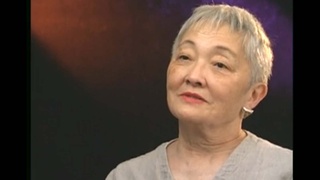Interviews
Treatment of Japanese fishermen in Canada during World War II
Well, that started happening in January. Especially after Hong Kong, then I think they got a lot more agitation, agitated, and they thought something has to be... they started then, at that point, and I know, I'm sure it was probably true in the United States, that the military and the navy especially, thought the Japanese fishermen could be spies. I mean, they never did accuse anybody of being spies, but they said they could be a "fifth column," and that was the term that was very prevalent at that time, the idea of a fifth column being in the country. And that, that came from Hemingway's idea that there was another enemy within. And so they did that business of going around and checking up on all the Japanese fishermen, and eventually, by that time, by January, I think it was, in January, they ordered all Japanese fishermen to bring their boats down to the -- bring 'em in, they prevented them, they prohibited, first thing, they prohibited that they could not fish. That was the first thing. Then they brought, brought, told them all to gather in Prince Rupert harbor, and these boats were then told that they would have to travel down the West Coast and take their boats to the Fraser Valley. That's the, that's a journey with these small little boats, these putt-putt boats, that would take almost a week. 'Cause it, how far could they go? They could only go by day, and when the weather was good. So they did, took all the boats, took 'em down to the Fraser Valley, and all these boats were tied up on the, the delta, right on Fraser, in the Fraser River. It was a great, and there is a famous picture of all these Japanese fishing boats stretching on for, way into the distance, all tied up to each other in kind of a big v-shape. That these boats were there until they, they were sold. A lot of them were sold, about, in about two or three years' time.
Date: July 25 & 26, 2006
Location: Washington, US
Interviewer: Tom Ikeda
Contributed by: Denshō: The Japanese American Legacy Project.








